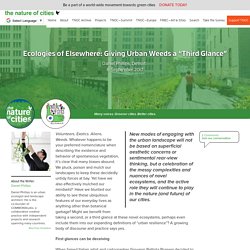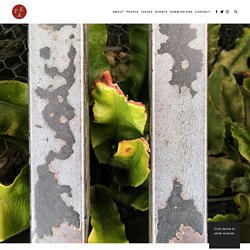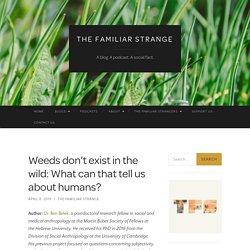

Wondrous Weeds. We pass them on roadsides without notice, crush them beneath our feet as we stroll across our lawns, and yank them out of our gardens as if they’d done us personal harm.

Yet some of the world’s most ubiquitous and pervasive weeds have storied pasts and incredible healing properties, rooted in our histories as firmly as they’re rooted in our backyards. In the introduction to An Oak Spring Herbaria (Lucia Tongiorgi Tomasi and Tony Willis, 2009), Bunny Mellon noted that an herb, according to The Standard Cyclopedia of Horticulture, could be defined as any plant that “dies to the ground each year, or at least does not become woody.” She then went on to list five herbs, which most of us would classify as weeds, that grow abundantly around the Oak Spring Garden Library in the warmer months and have been used for thousands of years as medicine. In celebration of National Herb Week, we’re featuring these five plants - favorites of Mrs. 'Rebel botanists' in Plymouth identify urban plants. The Secret Life of Kudzu. Kudzu (scientific name: Pueraria lobata) is now often seen as a blight on the southern landscape of the United States, but like many invasive plants it was first introduced deliberately.

Following its debut at the Japanese pavilion of the 1876 Philadelphia Centennial International Exhibition, the vine was quickly adopted to shade the gardens and porches of the American South and adorn them with its showy, fragrant flowers. But kudzu did not escape from the garden into the wild all on its own; rather, it was extensively promoted by the Soil Conservation Service as a bulwark against erosion and a remedy for the environmental and economic troubles brought on by cotton and tobacco monoculture. These government efforts resulted in the planting of approximately three million acres of kudzu by 1946. From an exotic rarity, kudzu thus morphed into a ubiquitous and uncanny interloper.
Even as kudzu gained notoriety in the sixties and seventies, it found some defenders. Ecologies of Elsewhere: Giving Urban Weeds a "Third Glance" – The Nature of Cities. New modes of engaging with the urban landscape will not be based on superficial aesthetic concerns or sentimental rear-view thinking, but a celebration of the messy complexities and nuances of novel ecosystems, and the active role they will continue to play in the nature (and future) of our cities.

Volunteers. Exotics. Aliens. Weeds. Whatever happens to be your preferred nomenclature when describing the existence and behavior of spontaneous vegetation, it’s clear that many biases abound. First glances can be deceiving When famed Italian artist and cartographer Giovanni Battista Piranesi decided to depict the dereliction of 18th century Rome in his Vedute series, it was not by accident that he reserved amplified poetic license in expressing the ways weeds had taken over. It’s no wonder then that these messy “novel ecosystems” aren’t just seen as symptomatic of decline, but also symbolic of it, even contributive to it.
To Be A Weed — The Ethnobotanical Assembly. This lesson is what attracts many artists to weeds, taking, for example, Ellie Irons and Anne Percoco's project Next Epoch Seed Library, which recognises the value of weeds in their own right by preserving those species left out of more instrumentalist international and local community seed banks (Thompson, 2017).

For Irons (2017), weeds are the perfect companion species for the Anthropocene Age, resonating with Anna Tsing's (2012) concept of 'slow disturbance landscapes'. Slow disturbance landscapes embrace the 'contaminated diversity' of human disturbance and draw us into collaborative cosmopolitan kinships with those species through which diversity may continue to emerge in the ruins. In facilitating 'play' in these landscapes, art liberates beings from the realm of necessity and values of efficiency and productivity, playing a central role in the ontological reappraisal of 'valuable' life (Gibson, 2018). To be a weed, therefore, is to be present. Weeds don’t exist in the wild: What can that tell us about humans? Author: Dr.

Ben Belek, a postdoctoral research fellow in social and medical anthropology at the Martin Buber Society of Fellows at the Hebrew University. He received his PhD in 2016 from the Division of Social Anthropology at the University of Cambridge. His previous project focused on questions concerning subjectivity, embodiment, advocacy and activism among autistic adults in the UK. Articles from this project were published in Ethos, Medical Anthropology, and Anthropology Now.
His current project engages with the value economies underpinning the global blood plasma industry. “It is needless to go about to compute the value of the damage weeds do, since all experienced husbandmen know it to be very great, and would unanimously agree to extirpate their whole race as entirely as in England they have done the wolves, though much more innocent and less rapacious than weeds.” My family and I had recently moved to an old house which we rent. Japanese knotweed, the invasive plant that just won’t die.